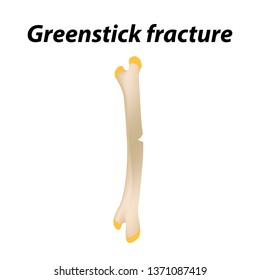Simply When You Believe Alleviation Is Near, Soft Tissue Treatment Reveals Its Uneasy Facts-- Discover Why The Procedure Can Be Excruciating Yet Beneficial
Simply When You Believe Alleviation Is Near, Soft Tissue Treatment Reveals Its Uneasy Facts-- Discover Why The Procedure Can Be Excruciating Yet Beneficial
Blog Article
Author-Huffman Yildiz
When you undertake soft Tissue treatment, you might find it surprisingly uneasy. This discomfort occurs as stress is applied to tense muscular tissues and damaged tissues, causing your discomfort receptors. While it can really feel traumatic in the minute, there's a factor behind this sensation. Comprehending what occurs in your body during these therapies can aid you value the procedure. So, what exactly is going on underneath the surface area?
The Physiology of Discomfort Throughout Soft Tissue Therapy
When you go through soft Tissue therapy, your body's reaction to pain is a complicated interaction of physiological processes. As the therapist uses pressure, your body turns on pain receptors, sending out signals to your brain. This activates the launch of neurotransmitters, such as compound P and glutamate, which intensify the experience of pain.
Your muscle mass might also tense up in feedback, further making complex the experience. Additionally, your body may release endorphins, all-natural pain relievers that can aid reduce some pain.
The interaction between these processes can create a distinct experience for each individual. Recognizing this physiological reaction helps you browse the experiences throughout treatment, enabling you to value the equilibrium in between pain and the possibility for recovery benefits.
The Function of Pain in the Healing Process
Although discomfort during soft Tissue treatment can really feel overwhelming, it plays a critical function in the recovery procedure. When you experience discomfort, your body is signifying that it's working to repair broken cells. This response aids increase blood circulation to the afflicted area, supplying important nutrients and oxygen required for recovery.
Additionally, discomfort can promote the launch of endorphins, your body's all-natural medicines, producing a sense of alleviation post-treatment. Welcoming this discomfort can aid you comprehend your body's limitations and motivate you to deal with underlying issues.
While Highly recommended Website , this process is vital for lasting recuperation and enhanced feature. Acknowledging discomfort as an important part of recovery can equip you to remain dedicated to your treatment.
Tips for Taking Care Of Pain Throughout and After Treatment
Managing pain during and after soft Tissue treatment can considerably improve your total experience and healing.
To start, interact openly with your specialist regarding your discomfort levels; they can readjust methods appropriately. Making use of deep breathing techniques can likewise help you loosen up and relieve discomfort.
Take into consideration using ice to the treated location post-session to lower inflammation and numb discomfort. Remaining moisturized help in the recuperation procedure, so drink lots of water.
Gentle extending and light motion after therapy can advertise blood flow and convenience rigidity. Lastly, ensure you obtain ample rest to enable your body to heal.
Applying these pointers can make your soft Tissue treatment more manageable and delightful.
what is it worth
In conclusion, while soft Tissue therapy can be uncomfortable, it's critical to acknowledge that this pain plays a crucial duty in your healing trip. By understanding the physical reactions at play, you can come close to the treatment with a more favorable state of mind. Bear in mind, the first pain often gives way to relief as your body launches endorphins. Welcome the procedure, and do not be reluctant to make use of the suggestions for handling pain to improve your experience and healing.
